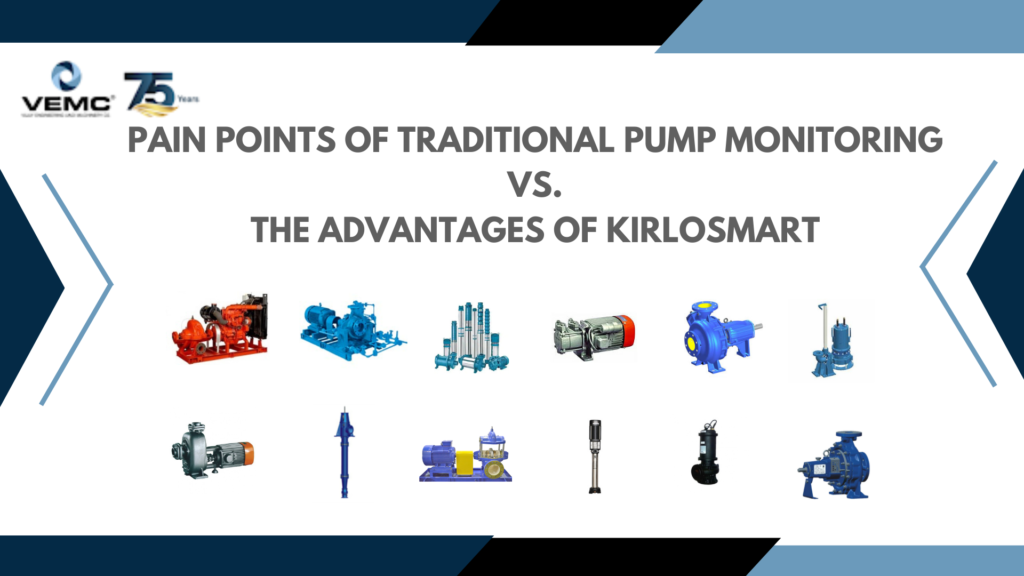
Monitoring pumps regularly and continuously is important. This is because any deviation in parameters can cause serious wastage of energy, wear and tear and drop in performance. Traditionally, pumps have been monitored by physically checking the parameters at the pump site and taking readings. However, with the advent of IoT, pump monitoring has been transformed like never before. VEMC is one of the top-notch industrial water pump suppliers in Mumbai, and in this blog we take you through the pain points of traditional pump monitoring and how Kirlosmart has successfully overcome these.
Challenges of traditional pump monitoring methods
- Physical monitoring: Traditional methods require physical monitoring of pumps using equipment like flow meters. This meant the technician had to personally go to the site and take readings.
- Costly: Traditional monitoring techniques were costly as these involved visit by a trained technician or training of an in-house resource for monitoring pump performance.
- Passive: Traditional monitoring is non-continuous in nature, in the sense that it takes place far and in between during the pump’s working life. Otherwise, it is done when the pump exhibits unusual behaviour such as noise or too much vibration.
Kirlosmart: Next-gen monitoring
When it comes to monitoring pumps, Kirlosmart is the next-gen solution. It operates using the cutting edge IoT technology which keeps your pumps connected to your laptop or smartphone device through WiFi at all times. This means a continuous stream of real-time data is being transmitted from the pump to your device and monitoring is going on 24×7.
Any deviation in pump parameters such as flow, vibration, voltage etc. will quickly be indicated by the Kirloskar app to alert the user. Thus, a proactive intervention can be done to avoid any sudden breakdown of the pump.
With Kirlosmart app in place, you no longer need to physically visit the pump site, call a technician with his equipment and take readings of parameters. Everything is being recorded and transmitted online. This avoids the monitoring costs significantly.
Kirlosmart offers users an interactive app interface which includes pump statistics in an easy-to-understand graphic style. The app also keeps a record of past data which helps predict when a breakdown might take place, thus also facilitating the scheduled maintenance of the pump.
How Kirlosmart helped pump-owners brace the pandemic
Kirlosmart came as a godsend to Kirloskar pump owners during the pandemic years. This is because it enabled them to monitor their pumps without physically venturing out to reach pump sites. All the parameters were available on their screens in real-time and only in case of any deviations physical intervention was required. This kept the owners safe while keeping the operational and maintenance costs of the businesses in check.
Kirlosmart is clearly a revolutionary technology in the field of pump monitoring. To know more about this path-breaking technology, feel free to call us on 022 43436655 or email us at marketing@vemc.co.in. We at VEMC are the leading industrial water pump dealers in Mumbai.

